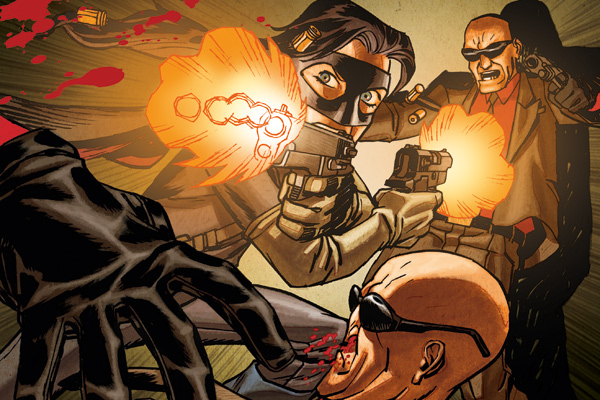In purely demographic terms, Mark Millar isn’t too different from the rest of us. He’s a middle-aged, wiry-haired, churchgoing Scot with two kids. He subscribes to The Spectator, and enjoys his ‘weekly treat’ of reading the latest issue in the bath. So, unless you have excavated this copy from the yellowing stack in your dentist’s surgery, he could even be scanning these words at the same time as you — right now.
But demographics, often inadequate, are practically useless when it comes to Millar. He may tick the box marked ‘Spectator reader’, but he actually spends most of his time on bizarro worlds in distant corners of the multiverse. He’s surrounded by assassins dipped in blood and sadists wrapped in capes. Everything is sweary and kinetic and extraordinary. And the reason why? Millar is a comic-book writer.
This is a good time to know about Mark Millar. The first instalment of his ten-part superhero saga Jupiter’s Legacy has just been published to a chorus of ringing cash registers and roaring adulation. And it’s all much deserved. The book’s basic idea is enticing enough: how will the children of the superheroes handle their legacy? But it’s the execution that really stands out. One page-turn begins with the caption ‘our children grew up to remind mankind of everything we could ever hope to be’, and takes us from the sepia, square-jawed 1930s to a coked-up, modern-day Los Angeles. It’s ambitious, adult and beautifully illustrated by the artist Frank Quitely.
‘Jupiter’s Legacy is my attempt at something like Star Wars,’ says Millar as he settles into our conversation and a glass of whisky in a central London pub. ‘It’s a gigantic story with a cast of about a hundred characters, and will hopefully still be a franchise in a century’s time.’








Comments
Join the debate for just £1 a month
Be part of the conversation with other Spectator readers by getting your first three months for £3.
UNLOCK ACCESS Just £1 a monthAlready a subscriber? Log in